It looks like you're using an Ad Blocker.
Please white-list or disable AboveTopSecret.com in your ad-blocking tool.
Thank you.
Some features of ATS will be disabled while you continue to use an ad-blocker.
13
share:
The Sumerian and Indus valley traditions record through their symbolism the onset of agriculture dating back as far as 13,000 years to the onset of
the Age of Virgo, when grains were first cultivated and her role as Queen of Heaven was first established due to her association with that era...such
is my consideration.
In the thread The Lost Sign i considered representation of astrological ages in Indus valley culture, and suggested that the sign here seen to the left represented Virgo, preceding the Age of Leo.

The Sumerian representation of Virgo was that of the furrow, this also closely relates to the cut furrow and grain sign which indicated the Goddess of grain Nisaba, and it can be safely concluded that Nisaba as the Queen of the Heavens was associate with Virgo.
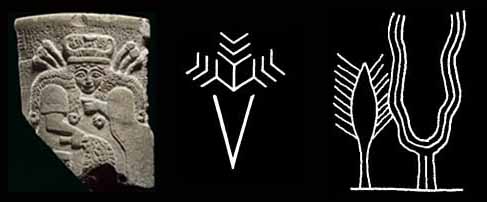
The Sumerians did consider the age before there was any cultivation of grain or domestication of sheep, and in their Debate between Grain and Sheep concluded that grain was of the primary importance.
So before the dawn of the grain Goddess things were considered to have been not so great, and they also note there was no role for Ningirsu or Ninurta and his associations with the plow and farming, quite understandably, so a great deal was understood to have been possible by the emergence of grain cultivation.
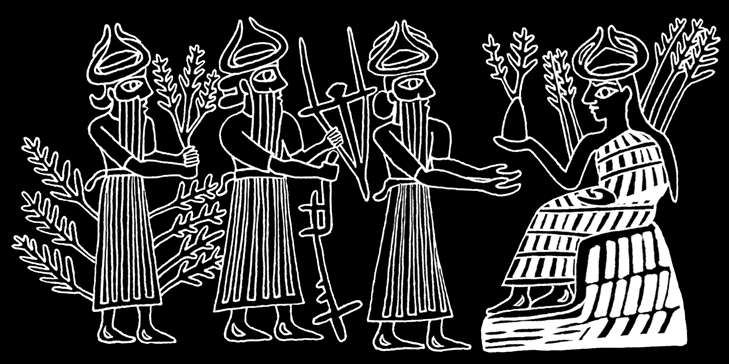
They further elaborate upon this were Nisaba as Virgo is given the primary role in establishing therefore the seven stars of the plow constellation;
With the onset of cultivation came the need for the recording of time and quantity and Nisaba was the Goddess of accounting and also announcing the fortuitous time according to the stars of Heaven which she observed upon her Lapis Lazuli tablet, and the establishment of weights and measures.
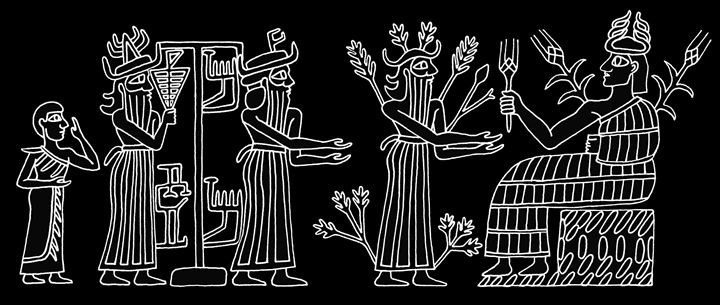
The primary star of Virgo, Spica, was also a Goddess in it's own right, either as Ezina the daughter of Enlil or bright Kusu, who was one of three principles of magical traditions, the others being Assaluhi son of Enki and Ningirim daughter of Anu.
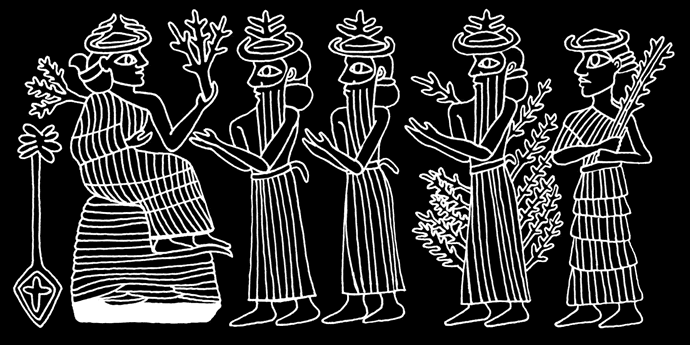
Nisaba was the patron deity of the city of Ereš the site of which is not yet known, and there is also association through that with the cult of Eres-kigal who was the Queen of the Underworld in Southern Mesopotamia, in the sense of return into the darkness of the Earth or soil, whereas Nisaba is the Earth cut into in the sense of the furrow and the potential for the emergence of life, but from this relationship later cults such as Demeter and Persephone developed, the cultic torch was the symbol of Kusu as Spica.
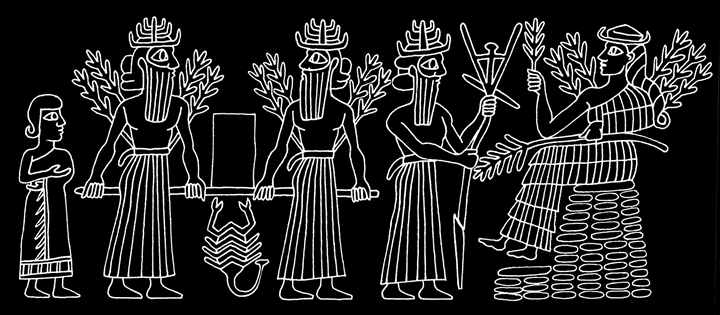
Spica as a star of the magi tradition of Sumer was probably what was involved in the star of Bethlehem tradition, as it was rising due East at that period and would thus have gained ascendancy directly overhead at zenith, so it was the natural sign for a conception of a Virgin and had association with the marking of great epochs.
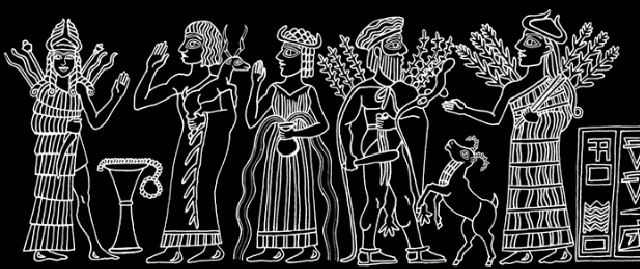
So there we are then, the importance of Virgo, and praise be to Nisaba!
A Hymn to Nisaba
Babylonian Virgo
Ancient Grain Goddesses
A woman - who was she?
Who was she not?
The image of a temple-structure, a ziggurat, she carried on her head - in her hand she held a holy stylus, the tablet of the favorable star of heaven she bore, taking counsel with it
In the thread The Lost Sign i considered representation of astrological ages in Indus valley culture, and suggested that the sign here seen to the left represented Virgo, preceding the Age of Leo.

The Sumerian representation of Virgo was that of the furrow, this also closely relates to the cut furrow and grain sign which indicated the Goddess of grain Nisaba, and it can be safely concluded that Nisaba as the Queen of the Heavens was associate with Virgo.

The Sumerians did consider the age before there was any cultivation of grain or domestication of sheep, and in their Debate between Grain and Sheep concluded that grain was of the primary importance.
When, upon the hill of heaven and earth, An spawned the Anuna gods, since he neither spawned nor created grain with them, and since in the Land he neither fashioned the yarn of Uttu nor pegged out the loom for Uttu -- with no sheep appearing, there were no numerous lambs, and with no goats, there were no numerous kids, the sheep did not give birth to her twin lambs, and the goat did not give birth to her triplet kids --, the Anuna, the great gods, did not even know the names Ezina-Kusu or Sheep.
There was no small grain, grain from the mountains or grain from the holy habitations. There was no cloth to wear; Uttu had not been born -- no royal turban was worn; Lord Ninĝir-su, the precious lord, had not been born;
The people of those days did not know about eating bread. They did not know about wearing clothes; they went about with naked limbs in the Land. Like sheep they ate grass with their mouths and drank water from the ditches.
So before the dawn of the grain Goddess things were considered to have been not so great, and they also note there was no role for Ningirsu or Ninurta and his associations with the plow and farming, quite understandably, so a great deal was understood to have been possible by the emergence of grain cultivation.

They further elaborate upon this were Nisaba as Virgo is given the primary role in establishing therefore the seven stars of the plow constellation;
Lady coloured like the stars of heaven, holding a lapis-lazuli tablet! Nisaba, great wild cow born by Urash, wild sheep nourished on good milk among holy alkaline plants, opening the mouth for seven reeds! Perfectly endowed with fifty great divine powers, my lady, most powerful in E-kur!
In order to make barley and flax grow in the furrows, so that excellent corn can be admired; to provide for the seven great throne-daises by making flax shoot forth and making barley shoot forth at the harvest, the great festival of Enlil
Good woman, chief scribe of An, record-keeper of Enlil, wise sage of the gods!
With the onset of cultivation came the need for the recording of time and quantity and Nisaba was the Goddess of accounting and also announcing the fortuitous time according to the stars of Heaven which she observed upon her Lapis Lazuli tablet, and the establishment of weights and measures.

The primary star of Virgo, Spica, was also a Goddess in it's own right, either as Ezina the daughter of Enlil or bright Kusu, who was one of three principles of magical traditions, the others being Assaluhi son of Enki and Ningirim daughter of Anu.
Probably originating as an epithet of Nisaba and Ezina/Ashnan meaning “Bright" Kusu was regularly regarded as a deity in her own right and often evoked in magic and religious texts.
It is impossible to be sure which grain goddess an image depicts, though only one set of horns in a crown indicates minor divinity. Thus the single-horned goddesses may have been Ezinu or Ashnan, while the double-horned ones may have been the more important deity Nisaba

Nisaba was the patron deity of the city of Ereš the site of which is not yet known, and there is also association through that with the cult of Eres-kigal who was the Queen of the Underworld in Southern Mesopotamia, in the sense of return into the darkness of the Earth or soil, whereas Nisaba is the Earth cut into in the sense of the furrow and the potential for the emergence of life, but from this relationship later cults such as Demeter and Persephone developed, the cultic torch was the symbol of Kusu as Spica.

Spica as a star of the magi tradition of Sumer was probably what was involved in the star of Bethlehem tradition, as it was rising due East at that period and would thus have gained ascendancy directly overhead at zenith, so it was the natural sign for a conception of a Virgin and had association with the marking of great epochs.
In order to establish bread offerings where none existed, and to pour forth great libations of alcohol, so as to appease the god of grandeur, Enlil, and to appease merciful Kusu and Ezina, she will appoint a great en priest, and will appoint a festival; she will appoint a great en priest of the Land.
...when the sage's hair is allowed to hang loose, when he opens the house of learning, when he stands in the street of the door of learning; when he finishes the great dining-hall of cedar, when he grasps the date-palm mace, when he strikes the priestly garment with that mace, then he utters seven praises to Nisaba, the supreme nursemaid:

So there we are then, the importance of Virgo, and praise be to Nisaba!
A Hymn to Nisaba
Babylonian Virgo
Ancient Grain Goddesses
edit on Kam33176vAmerica/ChicagoWednesday1831 by Kantzveldt because: (no reason given)
In Hindu astrology, it seems that Spica is...
Chitra (23 degrees 20’ Virgo to 6 degrees 40’ Libra):
Chitra is called “the star of opportunity.” It means “the brilliant” or “the beautiful.” Its symbol is the pearl. Its presiding deity is Tvashtar, the celestial architect of the universe. Chitra is one of the most mystical Lunar Mansions, with a profound desire to explore the caverns of the soul. It combines the energies of Mars, Mercury and Venus. Its animal totem is the female tiger and it is sometimes associated with serpents.
www.ishalerner.com...
Any connection?
👣
Chitra (23 degrees 20’ Virgo to 6 degrees 40’ Libra):
Chitra is called “the star of opportunity.” It means “the brilliant” or “the beautiful.” Its symbol is the pearl. Its presiding deity is Tvashtar, the celestial architect of the universe. Chitra is one of the most mystical Lunar Mansions, with a profound desire to explore the caverns of the soul. It combines the energies of Mars, Mercury and Venus. Its animal totem is the female tiger and it is sometimes associated with serpents.
www.ishalerner.com...
Any connection?
👣
a reply to: Kantzveldt
Thanks, now I know what I'll be reading and thinking about later. Always interesting, but for now I can't really comment. But behold, I might come back to you after I got my port as an offering to great Enlil.
Thanks, now I know what I'll be reading and thinking about later. Always interesting, but for now I can't really comment. But behold, I might come back to you after I got my port as an offering to great Enlil.
It is a known hypothesis.
www.greatdreams.com...

www.serendipity-astrolovers.com...
Information on Virgo as an 'age'
Star names lore and meaning
ephemeris.com...
ephemeris.com...
www.ancient-wisdom.co.uk...
www.greatdreams.com...

www.serendipity-astrolovers.com...
Information on Virgo as an 'age'
Star names lore and meaning
ephemeris.com...
ephemeris.com...
An important question is: Is the legacy of the Vinca culture an evidence of the ever known earliest manifestation of the Divine Power and well evolved and widespread Mother Goddess worship cult?
See also: 10 Mysterious Undeciphered Ancient Scripts, Tablets, Codes And Maps
Many terracotta figurines of the Mother Goddess were recovered in excavations at various archaeological sites of Indus Valley. Naturally, orthodox science proposes a classical explanation to this phenomenon and say that the proto Mother, symbol of female fertility, is depicted on prehistoric figurines.
However, the figurines unearthed in an ancient European settlement of Vinca, Europe's biggest prehistoric civilization and in Indus Valley may be a representation of someone entirely different.
Read more: www.messagetoeagle.com...
www.ancient-wisdom.co.uk...
The Sumerians: c. 4,000 BC.
(Shumer- 'Shem' - 'points to sky', 'pointed stone marker'),
The Sumerians were one of the first civilisations to record their observations, and their fascination resulted in the basis for much of modern astronomy today. They recorded the sun at the centre of a system surrounded by several planets. They considered the New-year to begin at the exact moment when the Sun crossed the spring equinox.
The 25,000 texts devoted to Astronomy and Astrology found in the ruins if the Nineveh library of Ashurbanipal bear witness to the Sumerian fascination with the motions of the celestial sphere.
Sumerian Translation Modern Name
GU.AN.NA
MASH.TAB.BA
DUB
UR.GULA
AB.SIN
ZI.BA.AN.NA
GIR.TAB
PA.BIL (Archer)
SUHUR.MASH
GU
SIM.MAH
KU.MAL
Heavenly Bull
Twins
Pincers, Tongs
Lion
Her father was Sin
Heavenly Fate
Which claws and cuts
Defender
Goat-Fish
Lord of the waters
Fishes
Field dweller
Taurus
Gemini
Cancer
Leo
Virgo
Libra
Scorpio
Sagittarius
Capricorn
Aquarius
Pisces
Aries
The Sumerians called the twelve major zodiacal constellations the 'Shiny herd'.
The Sumerians were the first to divide both space and time by units of six. The modern division of the year into 12 months, the 24 hours of each day, the division of hours into 60 minutes and 60 seconds, and the divisions of the circle/sphere by 360 degrees, each composed of 60 minutes and 60 seconds of an arc, are all Sumerian developments. This same division by units of six has been observed at several of prominent British megaliths.
edit on 18-3-2015 by theabsolutetruth because: (no reason given)
a reply to: BlueMule
I guess there has to be though things often slip over time, as Kusu the flaming torch Spica was understood as brilliant, but there was also the connection to the held head of grain and the potential seeds upon it, seeds of life as it were containing the energies of such, so a pearl would be a somewhat oblique derivation of that possibly.
As far as architecture goes the relationships are more obvious, Nisaba was the Goddess of scribes, accountants and architectural plans which is why Masons hold her in high regard, or at least the later traditions were Seshat is an Egypptian equivalent of Nisaba that preceded Thoth adopting her role, were Nisaba had a blue tablet and Thoth an emerald, and associate with laying the ground plan for potential civilization through cultivation.
a reply to: theabsolutetruth
Yes the Ages are well enough known but how the Sumerians developed their religious traditions based upon them is far more difficult to establish as i've attempted here.
I guess there has to be though things often slip over time, as Kusu the flaming torch Spica was understood as brilliant, but there was also the connection to the held head of grain and the potential seeds upon it, seeds of life as it were containing the energies of such, so a pearl would be a somewhat oblique derivation of that possibly.
As far as architecture goes the relationships are more obvious, Nisaba was the Goddess of scribes, accountants and architectural plans which is why Masons hold her in high regard, or at least the later traditions were Seshat is an Egypptian equivalent of Nisaba that preceded Thoth adopting her role, were Nisaba had a blue tablet and Thoth an emerald, and associate with laying the ground plan for potential civilization through cultivation.
a reply to: theabsolutetruth
Yes the Ages are well enough known but how the Sumerians developed their religious traditions based upon them is far more difficult to establish as i've attempted here.
edit on Kam33176vAmerica/ChicagoWednesday1831 by Kantzveldt because: (no reason given)
a reply to: Kantzveldt
This is great stuff, and something about ancient history that has always fascinated me: the shift from transhumance to agriculture.
They needed more rules; you can't build a city out of rule-less, itinerant shephards, right?
So, enter Virgo, to spew protocols for the betterment of mankind. Too funny, especially when you consider that to this day, those born under the sign of virgo are known as nitpicky, critical enforcers and inventors of rules.
Neat thread, Kantzveldt!
The Sumerians did consider the age before there was any cultivation of grain or domestication of sheep, and in their Debate between Grain and Sheep concluded that grain was of the primary importance.
So before the dawn of the grain Goddess things were considered to have been not so great, and they also note there was no role for Ningirsu or Ninurta and his associations with the plow and farming, quite understandably, so a great deal was understood to have been possible by the emergence of grain cultivation.
This is great stuff, and something about ancient history that has always fascinated me: the shift from transhumance to agriculture.
They needed more rules; you can't build a city out of rule-less, itinerant shephards, right?
So, enter Virgo, to spew protocols for the betterment of mankind. Too funny, especially when you consider that to this day, those born under the sign of virgo are known as nitpicky, critical enforcers and inventors of rules.
Neat thread, Kantzveldt!
edit on 18-3-2015 by Bybyots because: . : .
And of course grain was used to make beer.
edit on 18-3-2015 by Maghda because: (no reason given)
a reply to: Bybyots
No you couldn't even build a town out of people that rolled around in the mud, ate grass and drank out of puddles, the Sumerians had a dim view on such former times, and you couldn't have a shepherd without sheep so all was provided and set in motion.
All true of course without grain cultivation no reading or writing or accounting or laying down of grand designs or interesting seal impressions to ponder in short no civilization, which is why Nisaba should be praised as was the tradition for scribes to conclude their writings with.
No you couldn't even build a town out of people that rolled around in the mud, ate grass and drank out of puddles, the Sumerians had a dim view on such former times, and you couldn't have a shepherd without sheep so all was provided and set in motion.
All true of course without grain cultivation no reading or writing or accounting or laying down of grand designs or interesting seal impressions to ponder in short no civilization, which is why Nisaba should be praised as was the tradition for scribes to conclude their writings with.
a reply to: Kantzveldt
Another great thread Kantzeveldt. I studied astrology for a while and have always been fascinated by it. (If its of interest) from what I remember and unfortunately the tutor, a brilliant chemist by day, is now dead so I can't ask or find my old notes.
What I do remember was learning that the ancients knew bout the precession of the equinoxes and time taken for each sign to be gone through which was some 2150 appro years whereby the characterises of that specific Zodiac sign made it into our conscientiousness. A prime example is that is when the age of Gemini came writing and communication were things humans were especially open to and focused on. If you look at the last Age of Pisces it was when the church ruled and ran so much of people's lives, Now we have flipped into the Age of Aquarius (my own sign) We are determined to look at the big picture on piscean things and getting to the bottom of the rotten in religion and politics is being exposed big time. You can look through history and see these ages prompting mankind to evolve and improve. As this restarts again lifting us up to higher awareness for each cycle, its not hard to imagine mankind's struggle to develop communication during his first experience of the geminian age and then working with it and then upping the learned ability the next geminian age occurred. You also have the age of Leo - ruled by the sun - and the Eqyptian sphinx giving us the age of kings rulership, power etc as another fantastic example of how the age of leo focused the human mind.
Although we look for farming relating to virgo with the woman with a sheaths of grain in her hand. The original virgo icon was a sheath and a baby on the breast giving us provision and nurturing. (Taurus is the age for farming actually hence the iconic bulls) Man seems to have survived an awful long time off how he managed the land before he got stuck into land ownership farming unless he actually farmed considerably earlier than is currently thought. I suspect Virgo represented mother earth and all she gives to the mineral, plant, animal and man's world. With religion's determination to get rid of monarchial honour and rule a lot of feminine icon bashing has been done.
Another great thread Kantzeveldt. I studied astrology for a while and have always been fascinated by it. (If its of interest) from what I remember and unfortunately the tutor, a brilliant chemist by day, is now dead so I can't ask or find my old notes.
What I do remember was learning that the ancients knew bout the precession of the equinoxes and time taken for each sign to be gone through which was some 2150 appro years whereby the characterises of that specific Zodiac sign made it into our conscientiousness. A prime example is that is when the age of Gemini came writing and communication were things humans were especially open to and focused on. If you look at the last Age of Pisces it was when the church ruled and ran so much of people's lives, Now we have flipped into the Age of Aquarius (my own sign) We are determined to look at the big picture on piscean things and getting to the bottom of the rotten in religion and politics is being exposed big time. You can look through history and see these ages prompting mankind to evolve and improve. As this restarts again lifting us up to higher awareness for each cycle, its not hard to imagine mankind's struggle to develop communication during his first experience of the geminian age and then working with it and then upping the learned ability the next geminian age occurred. You also have the age of Leo - ruled by the sun - and the Eqyptian sphinx giving us the age of kings rulership, power etc as another fantastic example of how the age of leo focused the human mind.
Although we look for farming relating to virgo with the woman with a sheaths of grain in her hand. The original virgo icon was a sheath and a baby on the breast giving us provision and nurturing. (Taurus is the age for farming actually hence the iconic bulls) Man seems to have survived an awful long time off how he managed the land before he got stuck into land ownership farming unless he actually farmed considerably earlier than is currently thought. I suspect Virgo represented mother earth and all she gives to the mineral, plant, animal and man's world. With religion's determination to get rid of monarchial honour and rule a lot of feminine icon bashing has been done.
a reply to: Shiloh7
I considered the nurturing mother role because to Nisaba, the supreme nursemaid: is mentioned in her hymn, but i wasn't sure if that role would more properly belong to her sister Ninsun or Ninsumen who was the Mother of the birthing house and created through artificial insemination, for example in the Gudea text;
Were Jatumdug is later refered to as Ninsun and also with regards to the production of bricks. I mention this because two of the best examples of what you describe come from the site of the Temple of Ningirsu and show the breast feeding Mother seated on a basket as is always the case with Nisaba, but in the context of Gudea i am inclined to think they represent Ninsun/Jatumdug as his Mother.
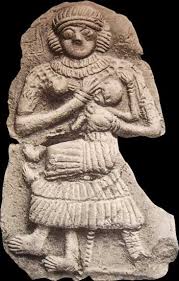
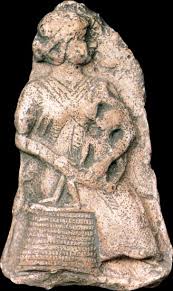
The two traditions would have been very closely related though and undoubtably over time merge into one.
Building of Ningirsu's Temple
I considered the nurturing mother role because to Nisaba, the supreme nursemaid: is mentioned in her hymn, but i wasn't sure if that role would more properly belong to her sister Ninsun or Ninsumen who was the Mother of the birthing house and created through artificial insemination, for example in the Gudea text;
For me, who has no mother, you are my mother; for me, who has no father, you are my father. You implanted my semen in the womb, gave birth to me in the sanctuary, Jatumdug, sweet is your holy name!
Were Jatumdug is later refered to as Ninsun and also with regards to the production of bricks. I mention this because two of the best examples of what you describe come from the site of the Temple of Ningirsu and show the breast feeding Mother seated on a basket as is always the case with Nisaba, but in the context of Gudea i am inclined to think they represent Ninsun/Jatumdug as his Mother.


The two traditions would have been very closely related though and undoubtably over time merge into one.
Building of Ningirsu's Temple
Even astrologers can't agree on when these various astrological ages begin and end.
The last date I read for the Age of Aquarius, for example, was 2600 AD.
On the other hand, archaeologists can't agree on exactly when the first cultivation of grain happened either, though the consensus is it took place in Mesopotamia in a time range consistent with what the OP states.
Harte
The last date I read for the Age of Aquarius, for example, was 2600 AD.
On the other hand, archaeologists can't agree on exactly when the first cultivation of grain happened either, though the consensus is it took place in Mesopotamia in a time range consistent with what the OP states.
Harte
new topics
-
Thanksgiving 2024
Member Art: 57 minutes ago -
The art of being offended
Social Issues and Civil Unrest: 3 hours ago -
FLORIDA Sues Biden-Harris FEMA for Denying Disaster Assistance to Homeowners with TRUMP Signs.
US Political Madness: 3 hours ago -
Turns out, they planned to go after P-nut.
US Political Madness: 7 hours ago
top topics
-
Comcast dumping MSNBC
Mainstream News: 16 hours ago, 22 flags -
Turns out, they planned to go after P-nut.
US Political Madness: 7 hours ago, 19 flags -
The art of being offended
Social Issues and Civil Unrest: 3 hours ago, 11 flags -
FLORIDA Sues Biden-Harris FEMA for Denying Disaster Assistance to Homeowners with TRUMP Signs.
US Political Madness: 3 hours ago, 8 flags -
Sick sick sick ---graphic story
Social Issues and Civil Unrest: 13 hours ago, 7 flags -
Thanksgiving 2024
Member Art: 57 minutes ago, 0 flags
active topics
-
FLORIDA Sues Biden-Harris FEMA for Denying Disaster Assistance to Homeowners with TRUMP Signs.
US Political Madness • 22 • : NorthOS -
Mike Tyson returns 11-15-24
World Sports • 19 • : argentus -
WATCH LIVE: US Congress hearing on UFOs, unidentified anomalous phenomena
Aliens and UFOs • 49 • : Lazy88 -
The art of being offended
Social Issues and Civil Unrest • 18 • : Athetos -
Comcast dumping MSNBC
Mainstream News • 23 • : Athetos -
Turns out, they planned to go after P-nut.
US Political Madness • 25 • : seattlerat -
Encouraging News Media to be MAGA-PAF Should Be a Top Priority for Trump Admin 2025-2029.
Education and Media • 66 • : BasicResearchMethods -
President-Elect DONALD TRUMP's 2nd-Term Administration Takes Shape.
Political Ideology • 176 • : WeMustCare -
Should we look for the truth, or just let it go?
US Political Madness • 117 • : Lazy88 -
Thanksgiving 2024
Member Art • 0 • : BingoMcGoof
13
